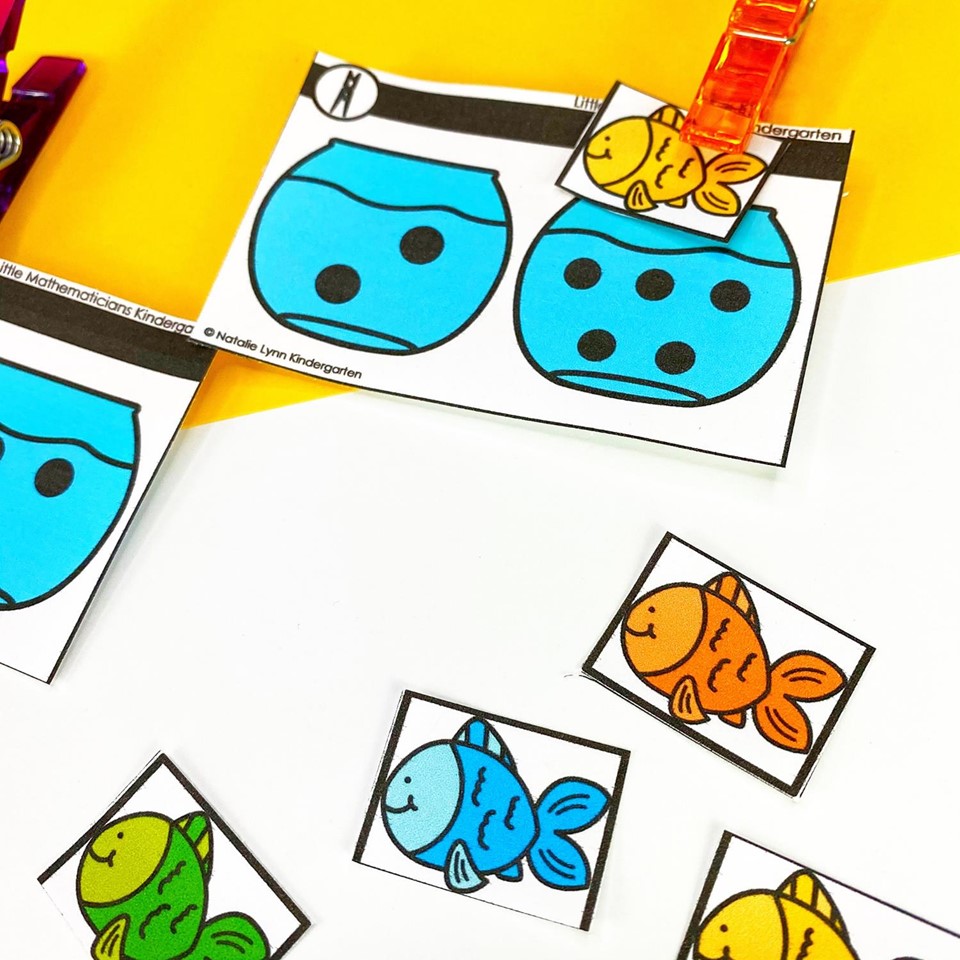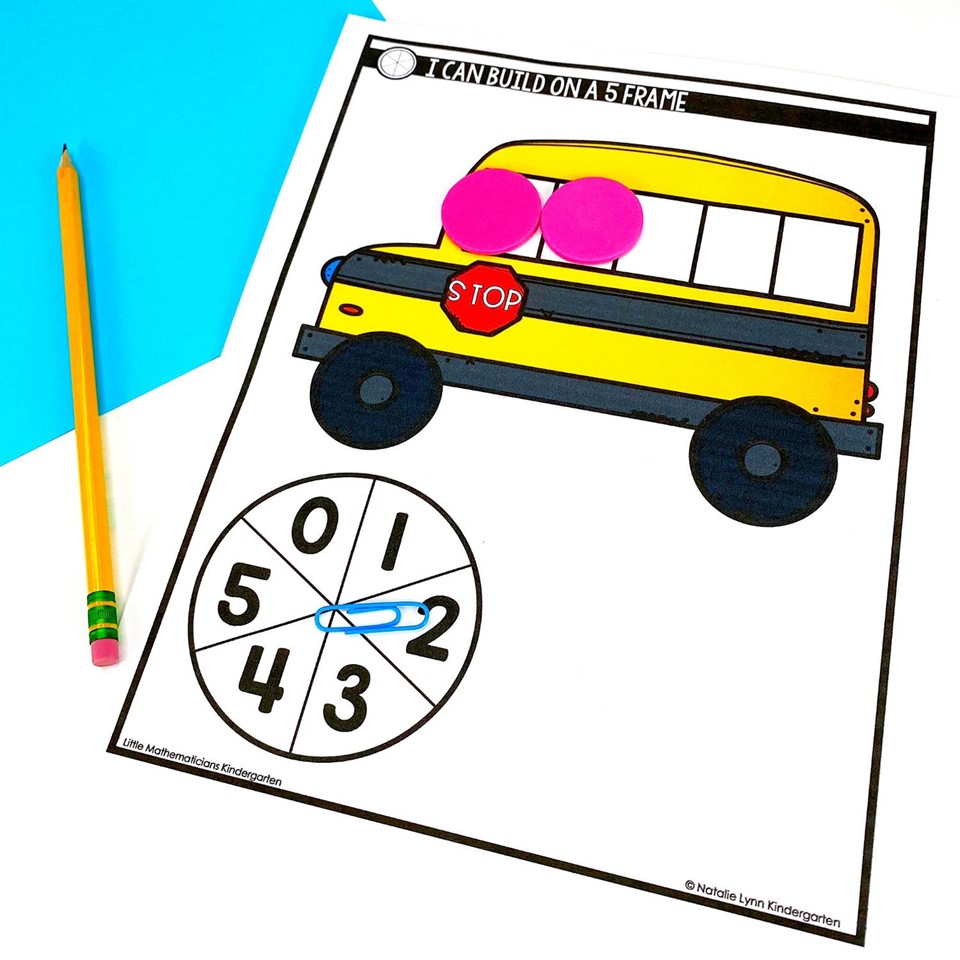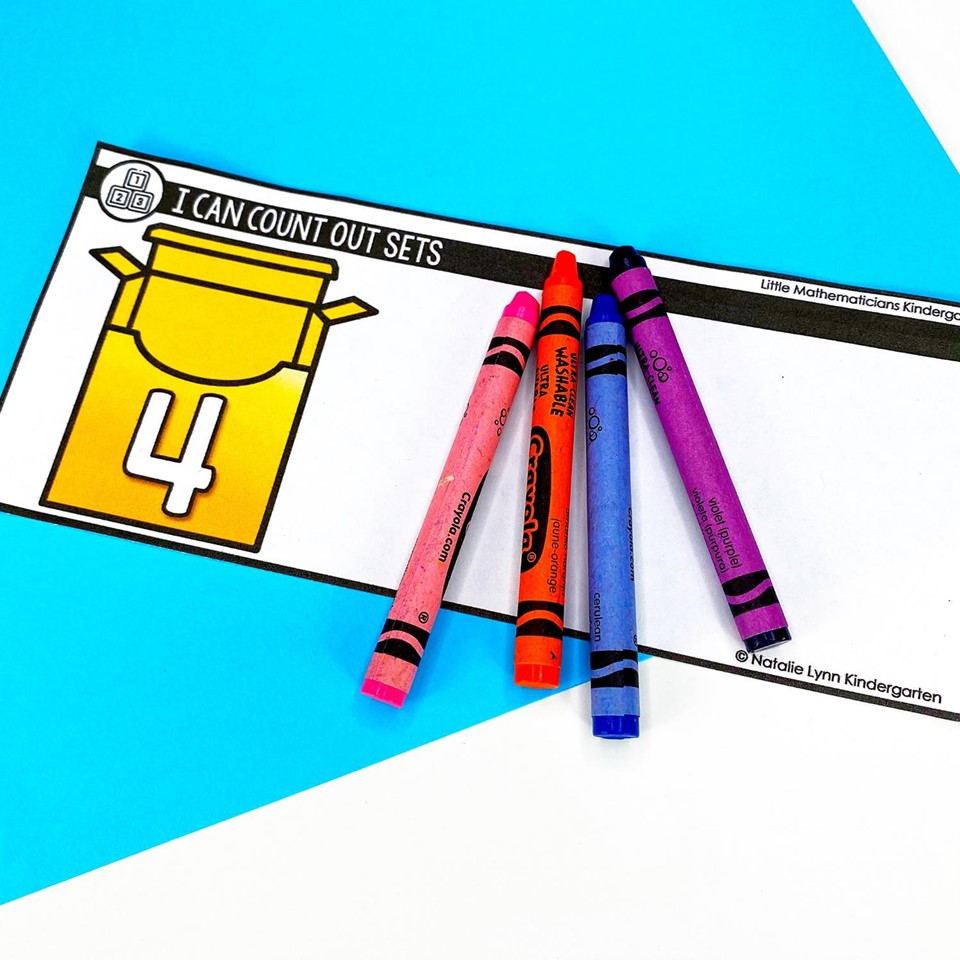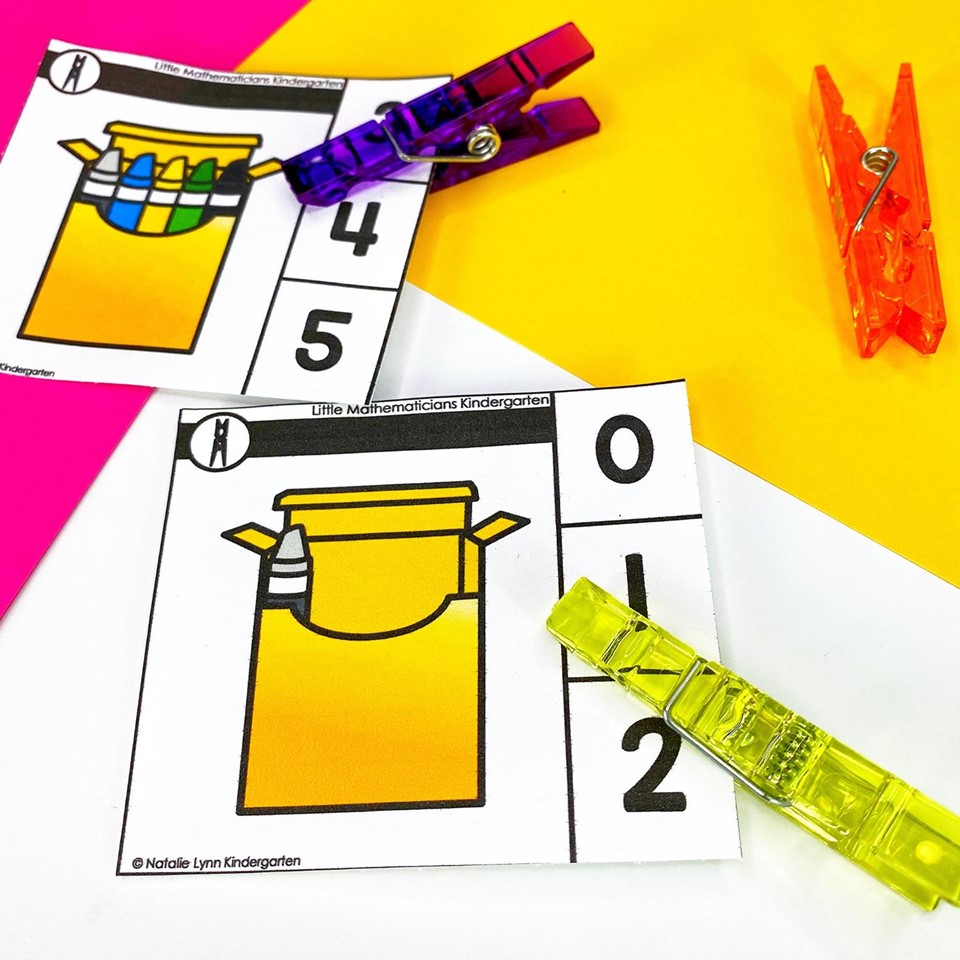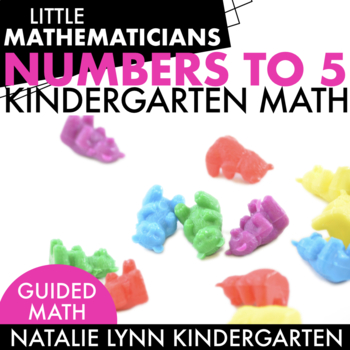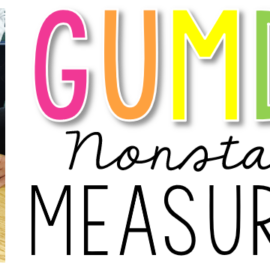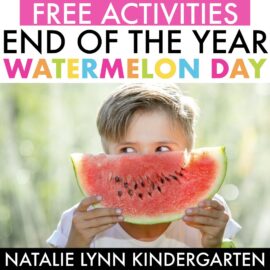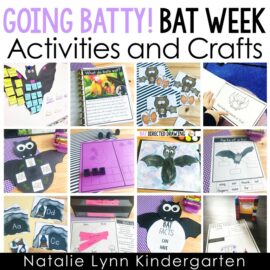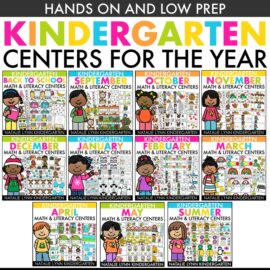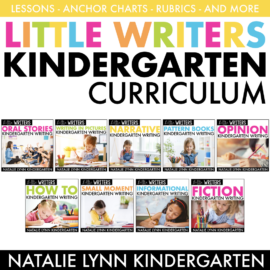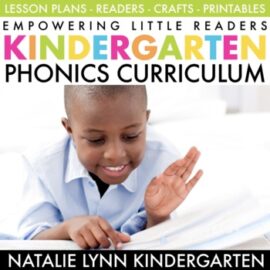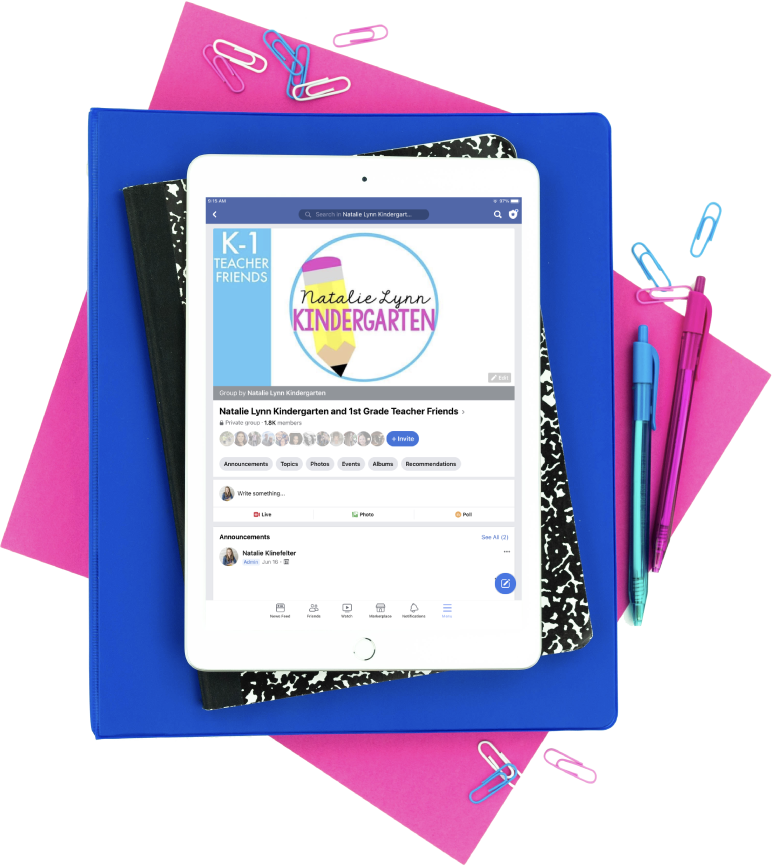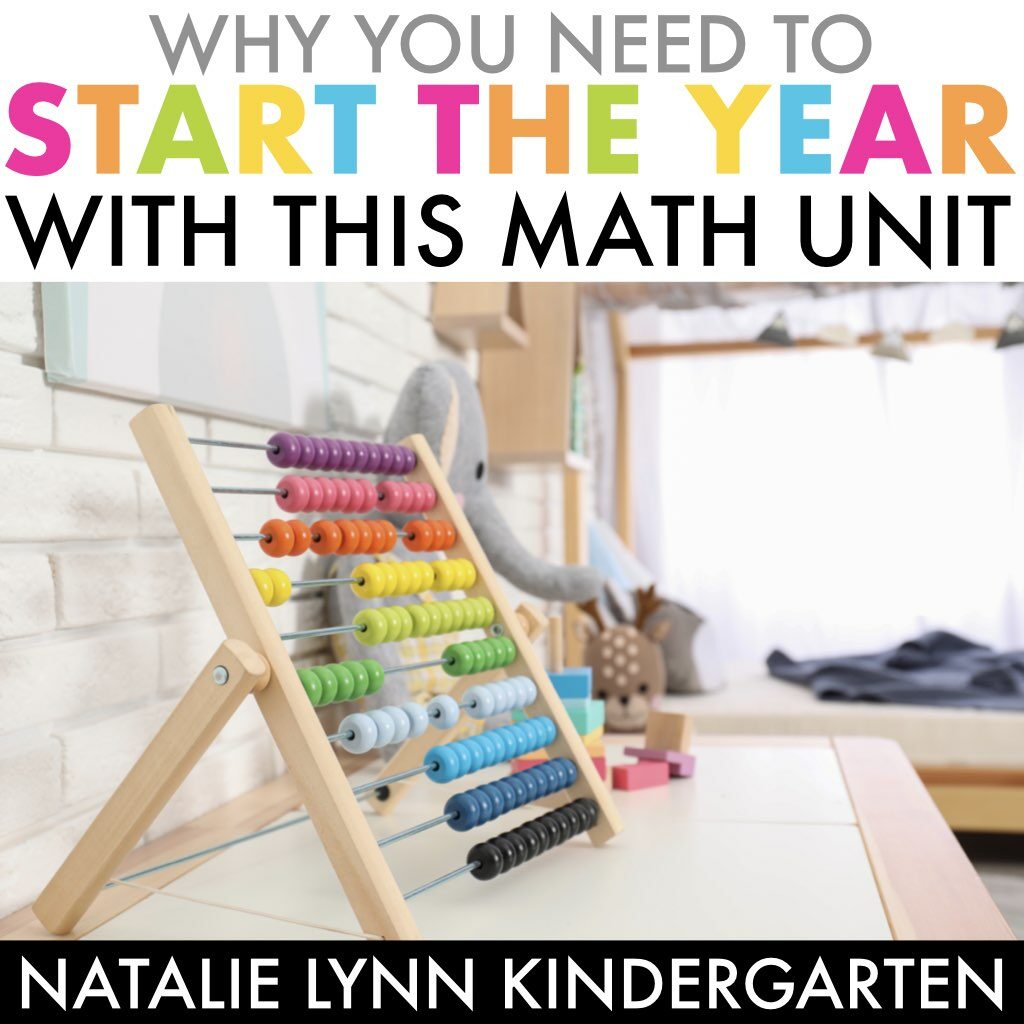
In this post: Learn about why teaching numbers to 5 is the first math unit you should teach in Kindergarten this year. This post also includes an overview of my Numbers to 5 Kindergarten math unit and how to implement it within your Kindergarten Guided Math instruction.
I have something I’ve been wanting to get off of my chest for a while now. Ready? Here goes:
Kindergarteners shouldn’t learn about sorting or 2D shapes as their first math unit.
There, I said it. And honestly, I feel a little lighter now that I’ve put it out there for the world to see!
If you open pretty much any math curriculum book, it likely introduces students to 2D shapes right away. It may also have students practice sorting objects.
And while I do agree that students need to know these concepts early on in the school year, I just don’t think they should be taught in the very first math unit in Kindergarten.
Keep reading to find out why….
Why You Should Wait on 2D Shapes and Sorting
There’s valuable learning that can happen within our 2D shapes and sorting math units if we wait to introduce them. So what kindergarten math unit should we introduce first instead?
Drumroll please…. Numbers to 5!
But why should numbers to 5 be the first math unit in Kindergarten?
Stop to think for a minute about the importance of numbers and number sense in the field of math.
Aren’t numbers at the core of pretty much all other concepts? Equations, geometry, measurement, etc. You name it, and numbers are likely a part of it.
So what if we introduced numbers first and allowed students to use their mastery of numbers to 5 to aid them in learning other math topics?
By starting with a numbers to 5 kindergarten math unit, you allow students to:
- Know and recognize numbers to 5
- Build number sense when counting to 5
Both of these skills are essential when interacting with a 2D shape or sorting unit!
Take your shape unit for example. Is it fair to ask students to count the number of sides on a shape before they’ve mastered 1-to-1 correspondence? If students don’t can’t recognize the number 3, does knowing that a triangle has 3 sides mean much to them?
While we know that some students will start Kindergarten with number sense, not all students will (and that’s okay!).
By making numbers to 5 the first math you teach in Kindergarten, we give all students the tools they need to count the number of sides and vertices each shape has.
This gives an equal opportunity for every student to begin with the same background knowledge and tools they need to be successful.
Why should you teach numbers to 5 before sorting, though? Sorting is a simple concept! So, why would you need to wait to teach it?
We always want students to make meaningful connections within their learning. That’s why teaching numbers to 5 first is helpful.
If you’ve already taught numbers to 5, you can encourage students to count the number of objects that they see when sorting. You can also have them compare the sorted groups – which is an important kindergarten standard!
“There are three butterflies, but only two ladybugs. Are there more butterflies or more ladybugs?”
Now that they’ve mastered or at least been exposed to the first six numbers, they have the needed exposure to tackle other grade-level appropriate math skills.
Does teaching Numbers to 5 as the first math unit in Kindergarten make sense to you too?
If so, are you looking for a resource to get you moving in the right direction? Learn more about my Numbers to 5 Kindergarten Guided Math Unit below.
What’s Included in my Numbers to 5 Kindergarten Math Unit
My Numbers to 5 Kindergarten math unit is exactly what you need for your first math unit in Kindergarten.
All of the Kindergarten math lesson plans are ready to print and go – differentiation included! It also features posters, partner games and activities, independent practice activities, math centers, word wall cards, optional homework, and an end of unit assessment.

Basically everything you need for Kindergarten guided math instruction! Let’s look at a breakdown of everything included in this resource.
Lesson Plans
I don’t know about you, but sometimes I just want my lesson plans ready to print and go at my fingertips! The Numbers to 5 Kindergarten math lesson plans will walk you through each portion of your kindergarten math block.
Each math lesson in this resource includes a whole-group activity, a partner activity, an independent activity, and an extended learning opportunity.
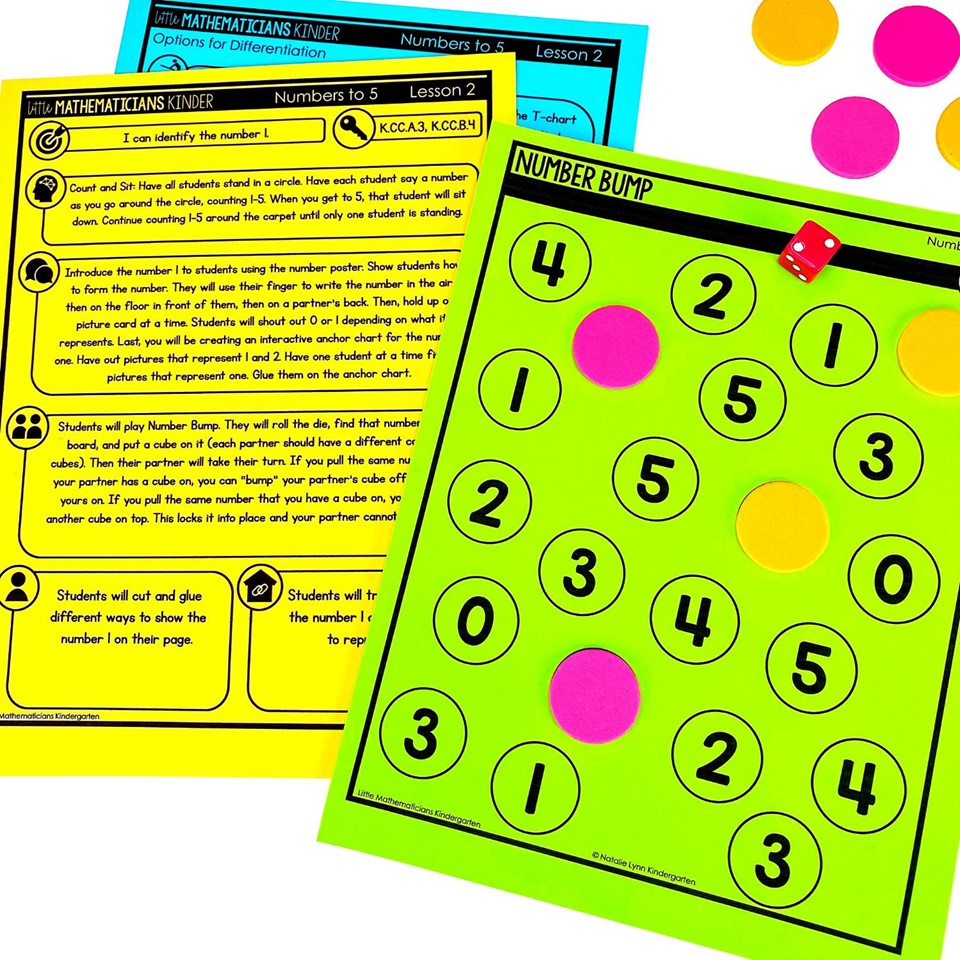
Ideas are also included on each math lesson plan to help you plan differentiated math small groups. Choose what works best for your class!
Number Posters and Word Wall Cards
The Kindergarten Numbers to 5 math unit includes math word wall vocabulary cards. These math vocabulary cards can be displayed as you introduce each math concept.

The math word wall cards in this unit include math vocabulary, but they also include important counting strategies. They can be added to a math word wall and referenced again and again throughout the year!
Number posters with number formation poems are also included.
One of the things that my students love most is the corresponding number formation poems to go along with each number. Take a closer look at the number poems below:

Simply have students repeat the number formation poem while tracing or writing each number!
Partners Games & Activities
Each of my Kindergarten math lesson plans follows the gradual release model of I do, We do, You do.
After the whole group math mini lesson, it’s important that students have a chance to practice the skills and math concepts together.
Partner games such as “Number Bump” are included to allow students to practice the content in a fun way!
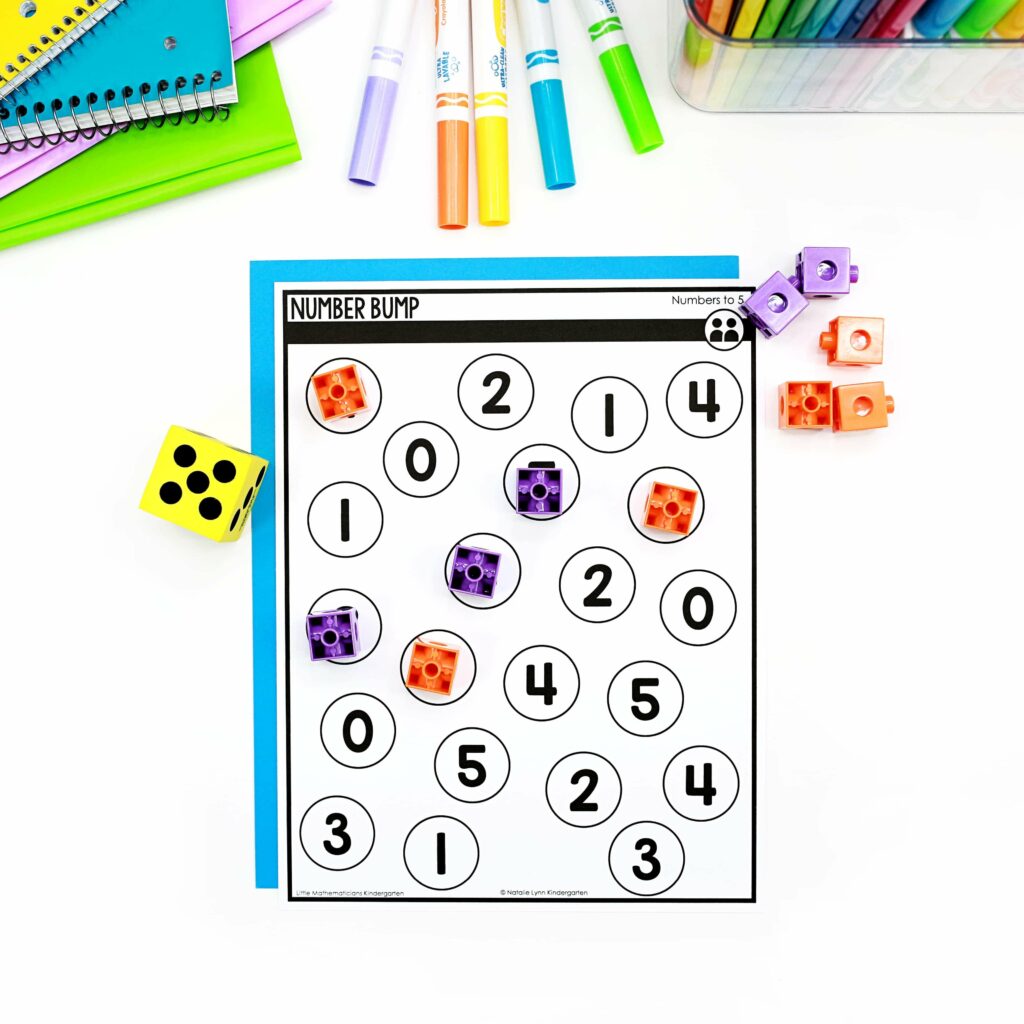
Take the pressure off of students by letting them work together to gain mastery of their numbers. These math games will have your students asking if they can play again tomorrow too. Trust me!
Independent Practice Activities
The independent practice activities are kindergarten math worksheets that allow students to show what they know about the lesson objective.
Whether it’s sorting pictures that represent a number, rainbow writing numbers, or reinforcing counting skills for numbers to 5, the planned independent practice activities directly relate to help students feel confident with the content they’re learning.
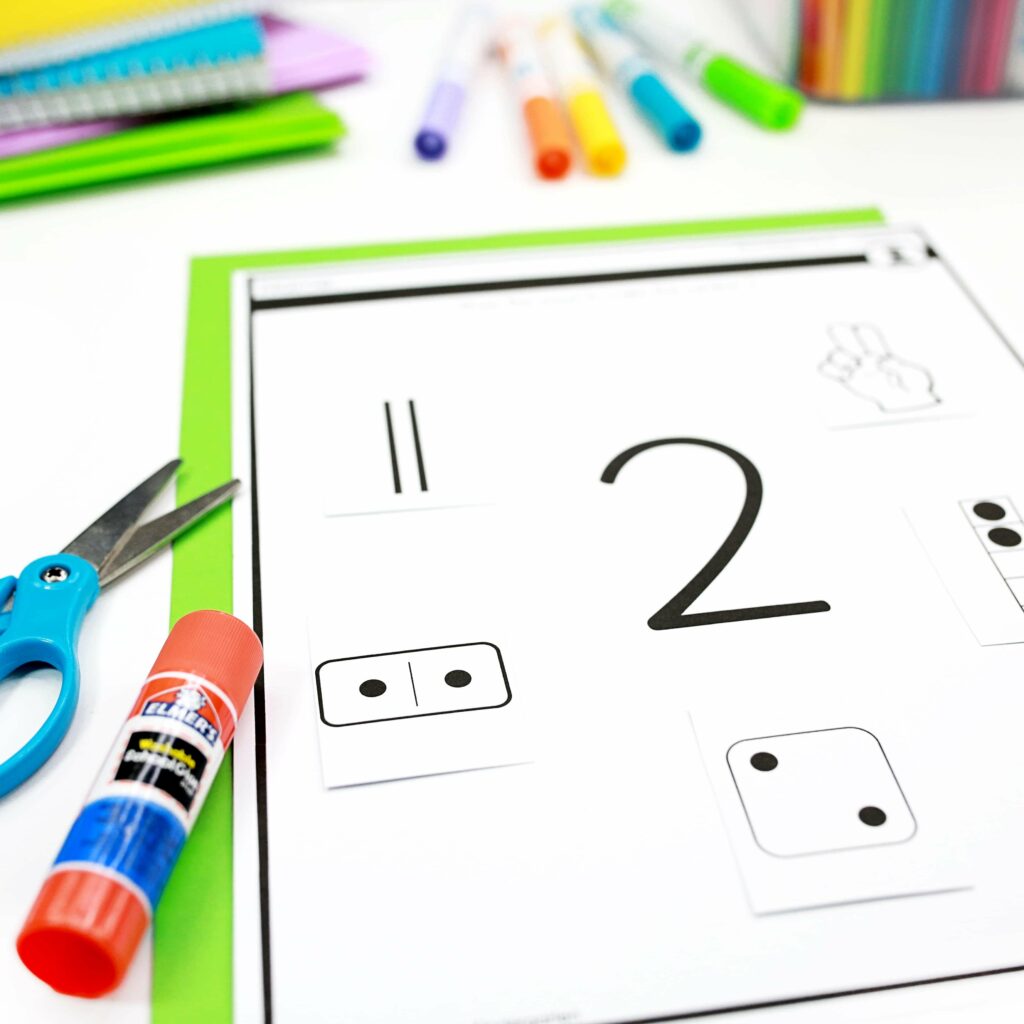
Math Centers
Did you know that the Kindergarten numbers to 5 math unit includes 6 math centers?
They are perfect for allowing students to rotate in small groups or to place in bins for free flowing math centers. It’s totally up to you!
The Kindergarten numbers to 5 math center activities include:
- Count It Out
- Counting Clip Cards
- Count and Compare Numbers to 5
- Spin and Count Five Frames
- Number Puzzles
- Roll and Trace and Roll and Write
These math center activities can keep students engaged and learning as you focus on working with your small groups.
Optional Homework
You may want to send something home to show parents what you are working on in math and give students additional practice with numbers to 5.
The optional homework is intended to reinforce the day’s lesson in a fun way – while being short enough that it’s not overwhelming!
Believe it or not, students actually get excited to show off what they’ve been learning in Kindergarten.
End of Unit Assessment
While the end of unit assessment is optional, it’s a great tool to see where your kindergarten students are and their understanding of numbers to 5.
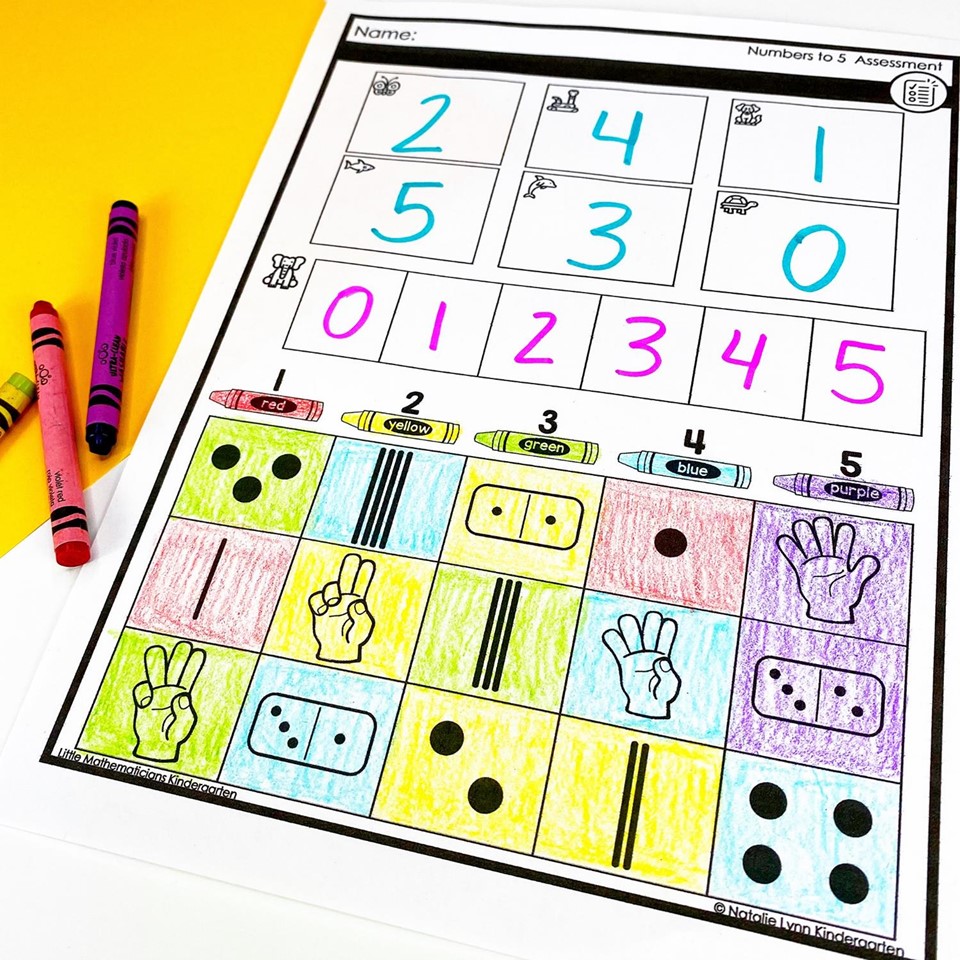
The numbers to 5 end of unit assessment asks students to write numbers and includes a color by code portion where students show what they know about the numbers they’ve learned.
This Kindergarten math unit packs in learning for numbers to 5 by presenting students with engaging, meaningful activities to complete!
Find the Kindergarten Numbers to 5 Math Unit here:
How to Utilize this within your Kindergarten Math Instruction
You may be wondering how to structure your Kindergarten math block when following the Numbers to 5 unit.
Whether you teach math whole group or in guided math small groups, this kindergarten math unit can work for you!
For the best results consider following a schedule similar to the one below which incorporates these activities into your Kindergarten math instruction:
Number Sense Warm-up [2 minutes]: Have students join you on the carpet to complete the day’s warm-up activity. These movement-based counting activities will get students warmed up and ready for math!
Teacher Mini-lesson [10 minutes]: You can teach the math mini lesson whole group or in small groups. This is where you will introduce the learning objective and also give students some practice supported by you. If you choose to teach this portion in small guided math groups, the main teacher mini lesson would be for you on-level small groups.
Partner Practice Activity [5-10 minutes]: Partner work will happen right after the teacher mini lesson or while students are still with you in small group. The partner practice activity has students work together with a partner to play a math game or complete an activity related to the learning.
Independent Practice Activity [5 minutes]: This is the final piece of the math lesson. Students will complete an independent practice activity to show what they have learned. If you choose to complete the math lesson whole group, this can be students’ “ticket to centers.” If you spend your math block in small groups, this is how you would wrap up the time.
Conclusion
If you are planning out your math scope and sequence for the upcoming year, I highly encourage you to try making Numbers to 5 your first math unit in Kindergarten! Not only will your students build a strong understanding of numbers to 5, but it will allow them to continue deepening that understanding as they learn about 2D shapes and sorting.

